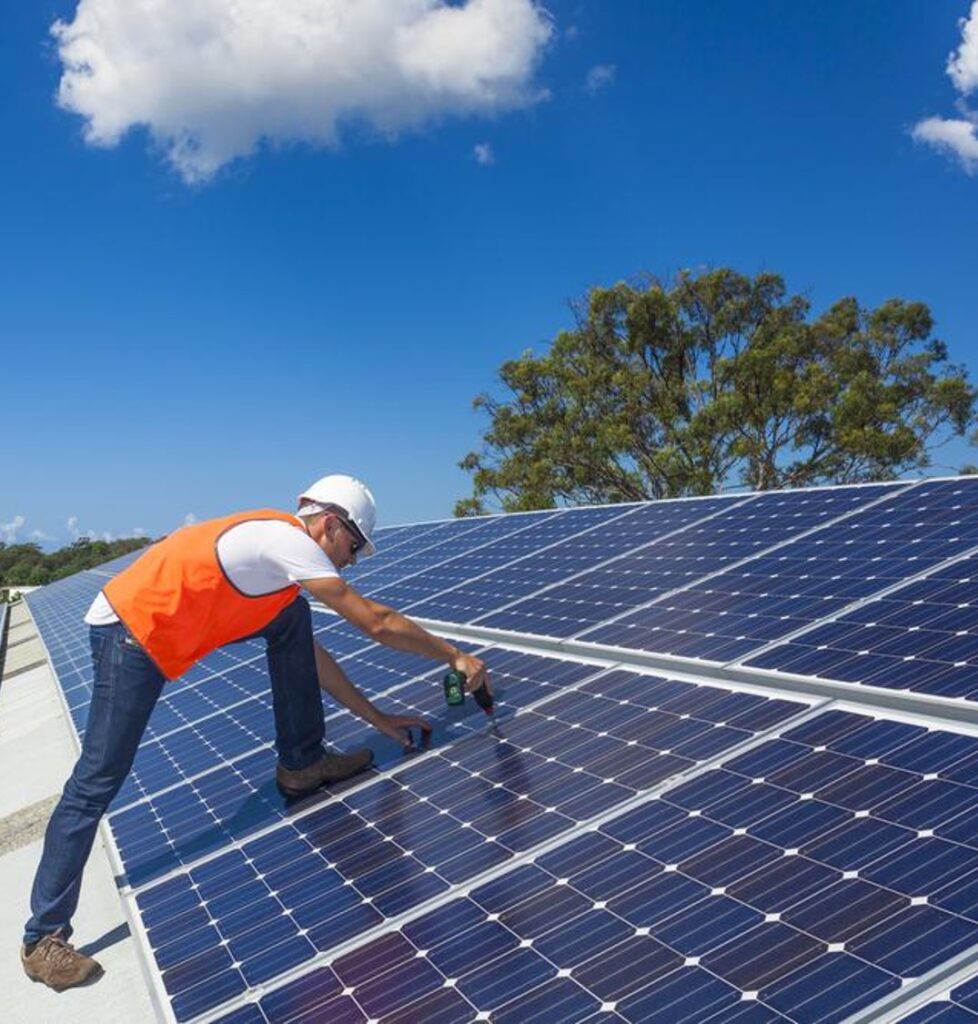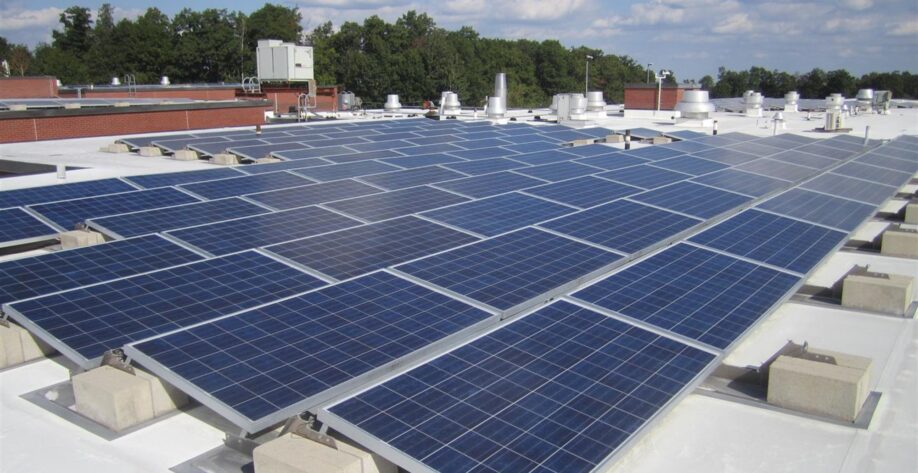With improvements in technology and the variety of federal and private programs providing options for installing photovoltaic (PV) arrays, or solar panels, building owners should be aware of the short- and long-term considerations, including cost implications for solar panel installations on roofs. From selecting photovoltaic system types and mounting options; to evaluating the existing roof system, building structure, monitoring construction, and considering future building maintenance and renovations; planning is paramount to avoiding unanticipated issues and unexpected expenses.
Improper planning can result in a multitude of complications, including roof leaks, structural damage, voiding roof system manufacturer warranties, and unforeseen costs. Consider reviewing the following items as you research the feasibility of installing photovoltaic arrays on your roof system:
Evaluate the condition of the existing roof system prior to PV installation
If a PV assembly is installed on a roof system that is nearing the end of its serviceable life or warranty period, costly removal, temporary storage/protection, and reinstallation, or modifications to the PV arrays may be required to replace the roof system. By performing an evaluation of the existing roof system in advance of PV installation, roof repairs or replacement can be sequenced to reduce the costs associated with PV removal and reinstallation.
Perform an analysis of the existing structure
Whether installing PV arrays in a ballasted assembly, or providing structural supports which penetrate the roof, additional dead, live, or wind loads may be imparted to the existing roof deck and structure. By performing a code review and structural analysis of the additional loads added to the structure by the PV system, the requirement for structural augmentation can be determined, and appropriately sequenced with roofing renovations and the PV installation, if appropriate.
Select the right PV mounting system for your roof and building
Steel dunnage mounting assemblies connected to the roof structure allow solar panels to be installed at steeper angles which more efficiently collect solar energy than ballasted systems with low slopes. However, the steep panels can act as sails, increasing the lateral loads on the building and creating new locations for heavy drifting snow. Additionally, the support posts penetrate the roof and create potential paths for moisture intrusion. Ballasted tray support systems typically have a low slope and do not result in increased wind load reactions. However, they often employ concrete pavers as ballast, which adds additional gravity (dead) loads to the roof deck and structure, which could trigger the need for structural augmentation. Ballasted assemblies typically do not require many penetrations through the roof, and they may be less likely to result in leaks. Roof membrane protection pads are placed below the supports to reduce the potential for abrasion of the roof surface. Proprietary PV mounting or support systems are beginning to be supplied by roof manufacturers, although it is not recommended to install systems which do not have a proven track record.
Confirm with the roofing manufacturer their requirements for PV arrays being supported

Different roofing manufacturers will have different requirements for the support of the solar panels and protection of the roof system. The roofing manufacturer’s guidelines will need to be followed in order to obtain, or maintain, the roofing manufacturer’s warranty. Some roofing manufacturers have developed proprietary systems in conjunction with solar panel providers so that multiple PV products can be covered under one warranty.
Review the code for life safety and accessibility around roof mounted solar panels
To increase the electrical production of solar systems, it is often advantageous to provide as many solar panels as possible. For low-sloped roof systems, this desire to install as many arrays as possible can lead to PV arrays being installed close to the roof edges. Fall protection or fall arrest systems are required to provide a safe working environment for subsequent maintenance to the roof or roof top equipment. Additionally, the roofing manufacturer’s walkway pads should be installed in the regular maintenance traffic locations to reduce the potential for slip hazards and provide redundant protection of the roof system. For steep-sloped roof systems, aerial lifts or scaffolding may be required to access the roof areas or solar arrays for maintenance, and these expenses should be considered during the initial planning process.
Review the code for fire safety requirements
Roof mounted solar arrays are subject to specific electrical and fire safety requirements which differ from PV systems installed on the ground. A professional knowledgeable with the electrical code and fire safety should be involved with the design and installation.
Make a contractor part of the solar panel team
Coordinate to have a licensed electrician and roofing contractor perform designated repairs or renovations before, during, and after the installation of the PV arrays.
Install time-proven PV systems
Over the years, various systems have been designed to integrate PV arrays into building components, and some have resulted in premature failures of the solar equipment or the roof systems. Thin PV films were once integrated into single ply roof membranes and were installed on numerous roof systems. However, after only a short time in service, the thin film PV arrays delaminated from the roof membrane because of different mechanical properties between the two materials, resulting in failed roof systems and a loss of PV function. Install PV and roof systems with a proven track record in the same part of the country as the current project to avoid becoming a case study.
Tagged In:
Building Enclosure Design & Consulting
